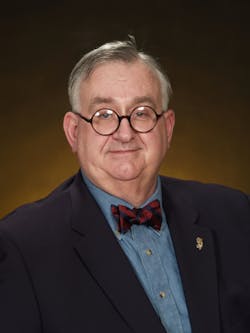Command Post: Diversity Is a Must, Not an Option
Chief officers must be aware of the issues related to diversity within our ranks and fire organizations, particularly because fire departments have long been viewed as exclusionary organizations.
Anecdotal reflection speaks of an organization whose historic roots stem from the landed gentry who stepped forward to organize these groups. Ben Franklin, George Washington, Thomas Jefferson and Samuel Adams were hardly working-class people. Katz and Miller (2002) suggest that this is part of the reason for our current culture and diversity problems.
Because most organizations have traditionally been dominated by one cultural group or style, the effort required to become a more diverse and inclusive organization demands a break from the past. It requires a major commitment of time and resources, a long-term strategic plan that transforms the culture, and a new way of doing business (Katz & Miller).
Although the legal requirements for diversity and inclusion go back nearly 40 years, if not longer, it is only within the past decade or so that progress has begun to be made. However, it has still not come to be a priority within the culture of most fire agencies.
Learning from literature
My study of the literature in this area indicates that the Minneapolis Fire Department was one of the earliest agencies to be the subject of court action aimed at creating racial diversity in its ranks. Forte (2003) indicates that the department was the subject of court action in 1970. At that time, the Court of Appeals in the Eight Circuit issued a decision that mandated minorities be hired. This was hailed by civil rights activists as a step in the right direction.
The bottom line is that when fire department leadership fails to recognize the value of diversity, they lose the ability to gain from a wide variety of views, as well as a valuable entree into the communities they are charged to protect.
Lowe and Barnes (2002) recommend that fire departments move beyond the bounds of their public-sector fire organization and reach out into the community. They urge that an internal-external congruence be developed between the culture of the community and the culture of the fire department. They write that a greater emphasis on outward dialogue will, “strengthen the citizens’ perception that their fire department provides quality emergency services and employs a diverse workforce.”
Fire officers need to remember that they will be judged on their actions. Things can no longer be done as they were in the past. A review of the literature (Gilbert and Ivancevich, 2000) indicates that a common thought among many writers in this field is that in order to be successful, a program should contain certain operative components. These programs should be comprehensive and inclusive, have top-level support as well as an educational component, and work to sensitize members of the organization as to the purpose of and reasons for the need to embrace cultural diversity.
It is important to note that education is a common component in just about everything in the world of the professional literature on this issue. Another critical component involves the need to make the program all-encompassing. Cassell (2000) draws upon the research of Kandola and Fullerton (1994) to make the case that, “managing diversity must pervade the entire organization, if it is to be successful.”
Final thoughts
To show you just how far we have come with regard to this issue, my friend Chief Rhoda Mae Kerr of the Austin, TX, Fire Department served in 2015–2016 as the first female president in the 142-year history of the International Association of Fire Chiefs (IAFC). The road to success in issues of diversity can be a rough one to travel, but the rewards can be great indeed.
The modern fire officer needs to develop an awareness of diversity-related issues in order to be an effective manager and leader. In this way, they will work to ensure fewer problems in their departments.
References
Cassell, C. “Managing diversity in the new millennium.” Personnel Review. 29:3 (2000), p. 268–274.
Forte, R. “Land of 10,000 faces.” Fire Chief Magazine. 47:5 (May 2003), pp. 32–34.
Gilbert, J, and Ivancevich, J. “Valuing diversity: A tale of two organizations.” Academy of Management Executive. 14:1 (February 2000), pp. 93-106
Kandola, R, and Fullerton, J. Managing the Mosaic. 1994. London: CIPD.
Katz, JH, and Miller, FA. “The inclusion strategy.” Executive Excellence. 19:8 (August 2002), p. 12.

Dr. Harry Carter
HARRY R. CARTER, Ph.D., who is a Firehouse contributing editor, is a fire protection consultant based in Adelphia, NJ. He is chairman of the Board of Commissioners in Howell Township Fire District 2 and retired from the Newark, NJ, Fire Department as a battalion commander. Carter has been a member of the Adelphia Fire Company since 1971, serving as chief in 1991. He is a life member and past president of the International Society of Fire Service Instructors and life member of the NFPA. He is the immediate past president of the U.S. branch of the Institution of Fire Engineers (IFE) of Great Britain. Carter holds a Ph.D. in organization and management from Capella University in Minneapolis, MN.
Connect with Harry:
Email: [email protected]






